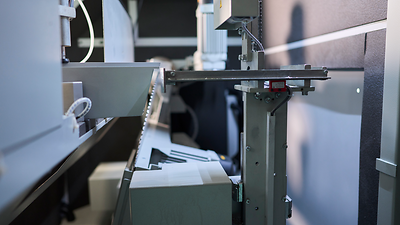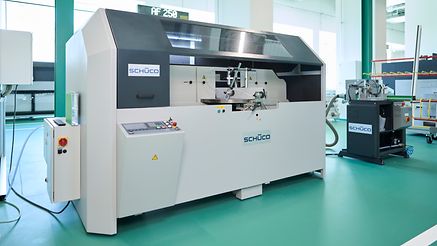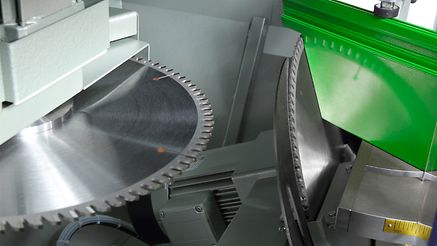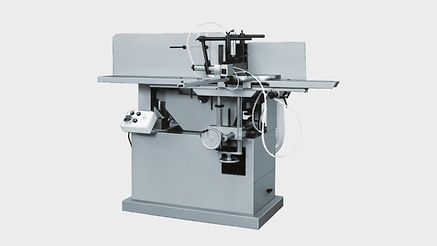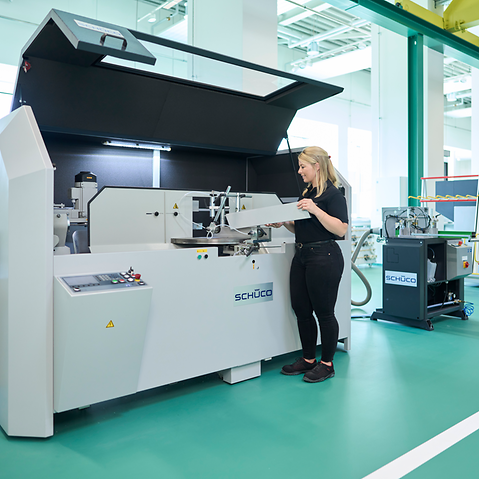
Notching and compound-mitre saws
Modern Schüco notching and compound-mitre saws for perfect profile cutting
Schüco notching and compound-mitre saws are designed in particular for metal fabricators involved in the processing of aluminium, window, door, façade and special profiles by a manual or automated process. Notching and compound-mitre saws are tried-and-tested machines used for all kinds of construction with aluminium profiles.


